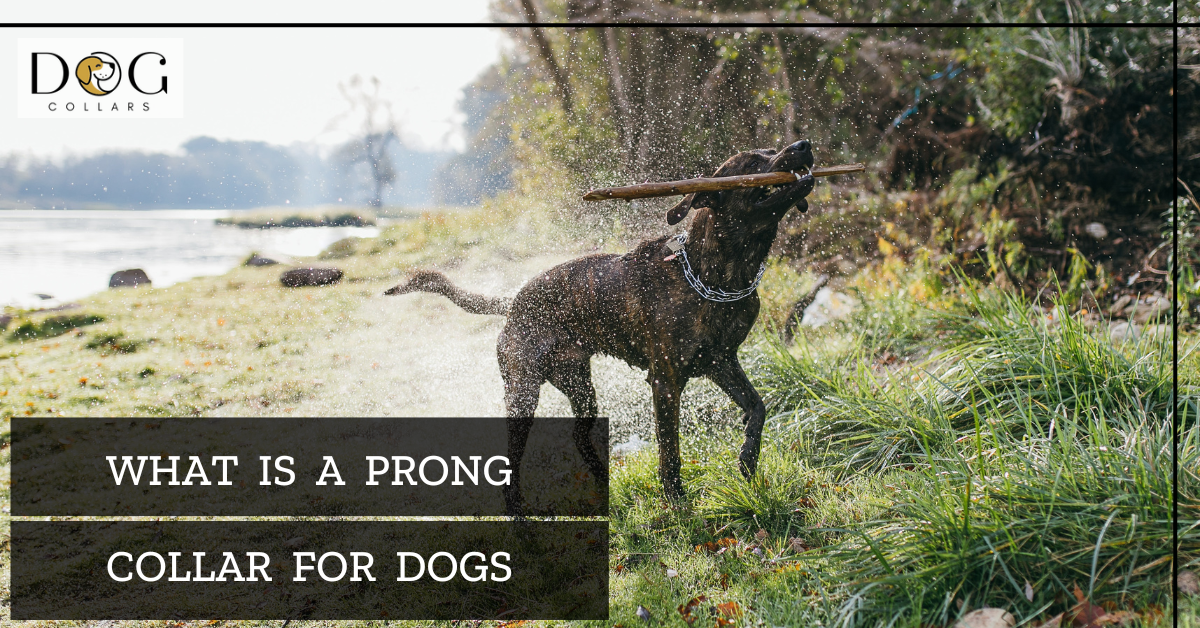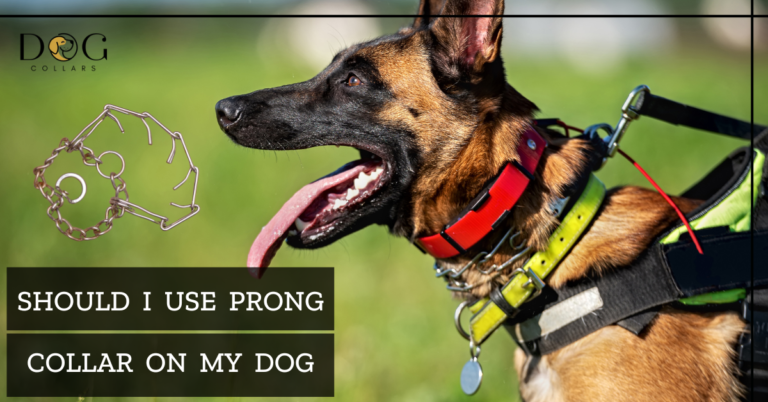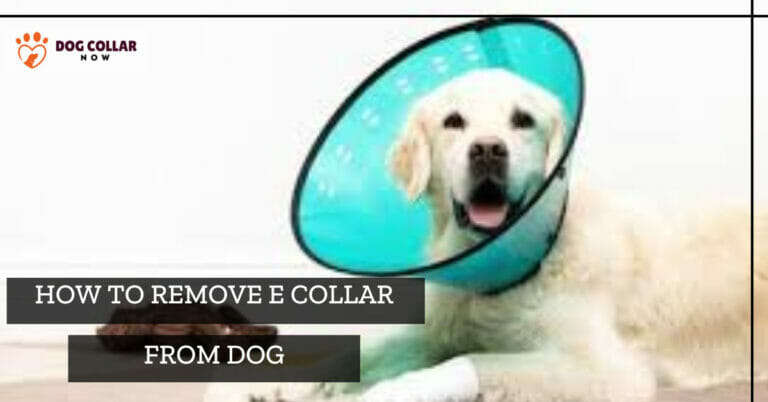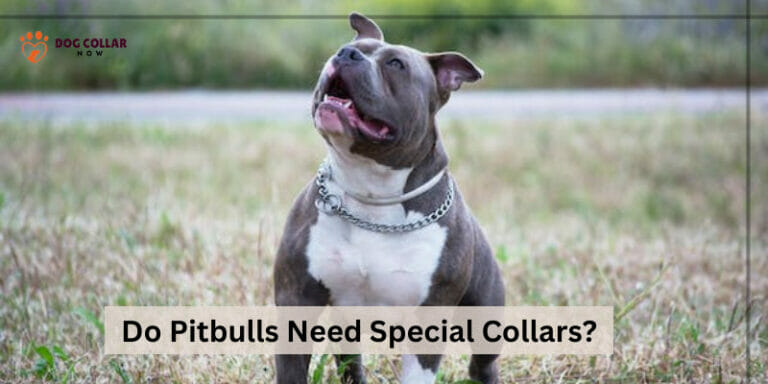What Is A Prong Collar For Dogs? A Comprehensive Guide

Is your furry friend making your walks a nightmare? A prong collar may be the solution that many dog owners have been searching for.
As a dog trainer, I have seen firsthand the benefits of using a collar for dogs.
In short, a prong collar for dogs is a type of training collar that uses metal prongs to provide corrective pressure around a dog’s neck. While it may look intimidating, when used correctly and under the guidance of a professional trainer, it can be an effective tool for teaching your dog.
Now that you understand what a prong collar for dogs is and how it can be used, let’s dive into the different types of collars available and how to properly fit and use them in our next section.
What Is A Prong Collar For Dogs? A Comprehensive Guide
A prong collar for dogs, also known as a pinch collar, is a tool used to provide corrective pressure around a dog’s neck.
When the collar is pulled on, the prongs create pressure points around the dog’s neck, mimicking the sensation of a mother dog biting on her pup’s neck. This helps to communicate to the dog that its behavior is unwanted, without causing them any physical harm.
Despite their effectiveness, pinch collars can be controversial, with some people claiming they are inhumane or even abusive.
It’s important to note that pinch collars are not a one-size-fits-all solution and should only be used under the guidance of a professional. Additionally, it’s important to ensure that the collar is properly fitted and not too tight, as this can cause the dog an injury.
The pressure from the prongs is intended to be a correctional tool to discourage unwanted behavior, such as pulling or lunging on the leash. When used correctly, it can be an effective tool for improving a dog’s behavior on walks.
Mechanics Of A Prong Collar
A prong collar consists of a series of metal links with prongs that face inward toward the dog’s neck. When the collar is pulled on, the prongs create pressure points around the dog’s neck, which can be uncomfortable for the dog.
This discomfort is intended to be a correctional tool, rather than causing any physical harm. The goal is to discourage unwanted behavior, such as pulling or lunging on the leash, and encourage the dog to follow the handler’s commands.
Proper Fitting And Placement
When it comes to properly fitting a pinch collar, there are a few things you need to keep in mind.
- First, the collar should be snug but not too tighten. There should be enough room to fit two fingers between the collar and your dog’s neck.
- Second, the prongs should point inward and sit at the top of the neck, just behind the ears.
- Third, the quick-release clasp should be positioned at the top of the neck, in front of the ears.
- Lastly, make sure that the tag is securely fastened to the D-ring on the collar.
Advantages Of Prong Collars
Let’s take a closer look at some of the advantages of using a prong collar for dogs:
1. More Control:
A prong collar can provide dog owners with greater control over their dogs during walks. The pressure points created by the collar can help to discourage unwanted behavior, such as pulling or lunging on the leash.
2. Safety:
A properly fitted used prong collar can be a safe and effective tool. The collar is designed to mimic the sensation of a mother dog biting on her pup’s neck, which can help to communicate to the dog that their behavior is unwanted.
3. Training Tool:
Prong collars can be a valuable tool for professional trainers working with dogs that have behavioral issues. These can help to provide quick and effective corrections for unwanted behavior, which can speed up the dog training process and improve the dog’s behavior more quickly.
4. Last Resort:
Prong collars should only be used as a last resort when other training methods have failed. However, they should never be used as a first option, and should only be used when other training methods have failed.
Disadvantages Of Prong Collars
Here are some of the potential drawbacks to using a prong collar:
1. Potential For Injury:
Incorrect use of the prong collar can lead to respiratory issues and even long-term damage to a dog’s neck and trachea. This can lead to respiratory issues and even long-term damage to the dog’s neck.
2. Negative Association:
Some dogs may develop a negative association with the prong collar, particularly if it is abused. This can lead to fear or anxiety around the collar, making it difficult to use it as an effective training aid in the future.
3. Risk Of Misuse:
Inexperienced dog owners, which can lead to harm for both the dog and the owner often misused prong collars. You should use the collar only under the guidance of a professional trainer to make sure it is used safely and effectively.
4. Controversial Training Tool:
Prong collars are a controversial training aid, with some people believing that they are inhumane or even abusive. People can criticize and socially push back against those who use them incorrectly or without care.
Appropriate Scenarios For Using A Prong Collar
Appropriate scenarios for using a prong collar might include:
1. Behavioral Issues:
If your dog exhibits behavior issues like excessive barking, lunging, or jumping a prong collar may help correct these behaviors by providing an instant correction when they occur.
However, it’s crucial to combine this tool with positive reinforcement training techniques to teach your dog what you expect from them.
2. Aggression:
Prong collars may be useful in managing aggressive dogs, particularly when they are on a leash. In some cases, a prong collar can provide enough control to prevent the dog from lunging at other dogs or people.
3. Uncontrollable pulling:
If your dog pulls excessively on the leash, a prong collar can help you gain better control during walks. It provides a quick correction, discouraging your dog from pulling. Make sure to use the prong collar as a training aid, gradually weaning your dog off it once they’ve learned to walk calmly on a loose leash.
Alternatives To Prong Collar
If you’re looking for alternatives to prong collars, there are several options to consider.
Front-Clip Harnesses:
Front-clip harnesses are a popular alternative to prong collars, especially for dogs that tend to pull on their leash. These harnesses work by attaching the leash to the front of the dog’s chest rather than the back, which gives the handler more control and reduces pulling.
Additionally, front-clip harnesses can help prevent injuries caused by pulling, such as neck strains or tracheal damage.
Head Halters:
Another alternative to prong collars is a head halter, which works similarly to a horse’s halter.
These devices fit over the dog’s snout, giving the handler more control by directing the dog’s head and limiting its ability to pull. Head halters are not recommended for dogs with short snouts, such as pugs or bulldogs, as they can interfere with breathing.
Positive Reinforcement Training Techniques:
Positive reinforcement training techniques are an effective way to teach dogs good behavior without relying on physical corrections like prong collars. This method involves rewarding desired behaviors with treats or praise, rather than punishing unwanted behaviors.
Controversy Surrounding Prong Collars
- Prong collars are a controversial training tool, with some people claiming they are inhumane or abusive.
- Opponents argue that prong collars can cause physical harm to dogs, such as neck injuries, tracheal damage, and respiratory issues.
- Prong collars may also cause fear, anxiety, or negative associations in some dogs, making it difficult to use them effectively as a training aid.
- Some people believe that prong collars are unnecessary or ineffective and that positive reinforcement training techniques are a more humane and effective alternative.
- Advocates of prong collars argue that they are safe and effective when used correctly and under the guidance of a professional trainer.
- It’s important to note that we should only use prong collars as a last resort and inappropriate scenarios, such as managing aggression or uncontrollable pulling.
- Ultimately, the decision to use a prong collar should be based on a thorough understanding of its mechanics, risks, and benefits, as well as the individual needs and preferences of the dog and their owner
Conclusion
A prong collar is a great tool for behavior modification and training, but it needs to be used properly. When used correctly, it can safely and effectively train your dog without causing harm or discomfort.
It’s important to remember that the prong collar is just one of many tools available for managing canine behavior; positive reinforcement, clicker training, and other methods are also valuable and effective approaches.
As with any type of equipment you use on your pet, always consult with an experienced trainer before using a prong collar on your dog.
FAQs:
How is a prong collar different from other collars?
A prong collar works differently from other collars such as a flat collar, shock collar, choke chain, or martingale collar because it provides a unique form of correction that is not found in other collars. The prong collar is unique because it uses gentle pressure to create a subtle reminder to the dog that it should not pull on the leash.
Is a prong collar safe for a dog?
A prong collar can be safe for a dog if used correctly and under proper supervision from a trained dog trainer. It is important to make sure that the prong collar is properly fitted so that it sits high on the dog’s neck.
How long should a dog wear a prong collar?
A prong collar should only be worn during training sessions under the guidance of a professional trainer and should not be left on a dog for an extended period of time.
Do prong collars calm dogs?
Prong collars are designed to provide a correction to a dog’s behavior during training sessions, but they do not necessarily calm dogs.
Do prong collars scare dogs?
Prong collars can cause fear and anxiety in some dogs, especially if they are not used properly or if the dog has had previous negative experiences with them.






